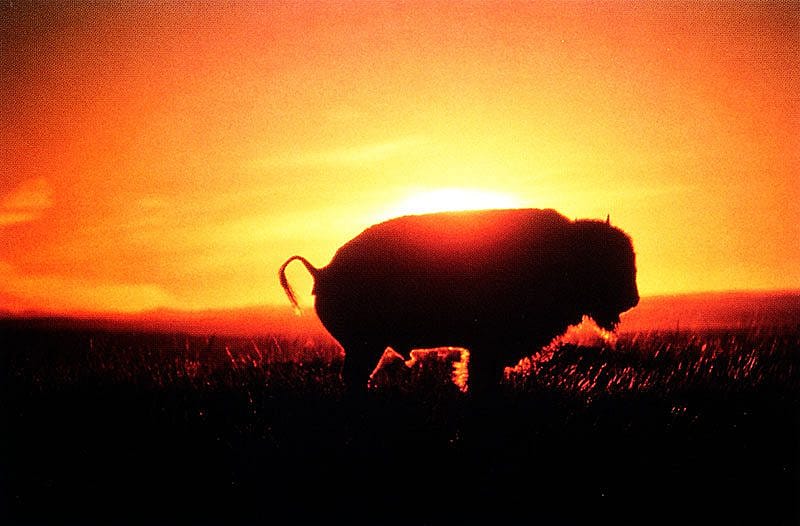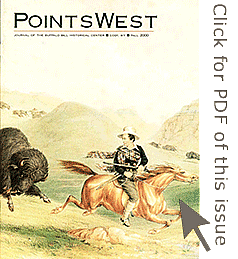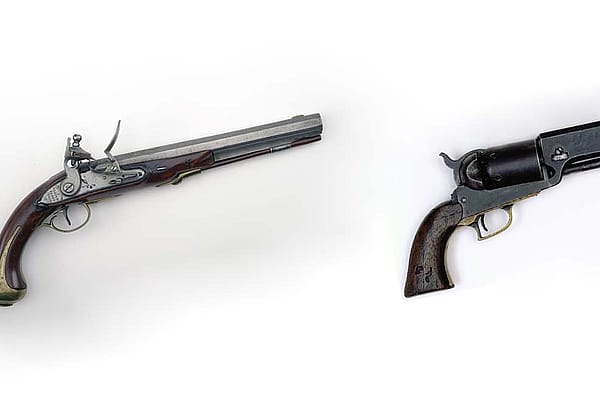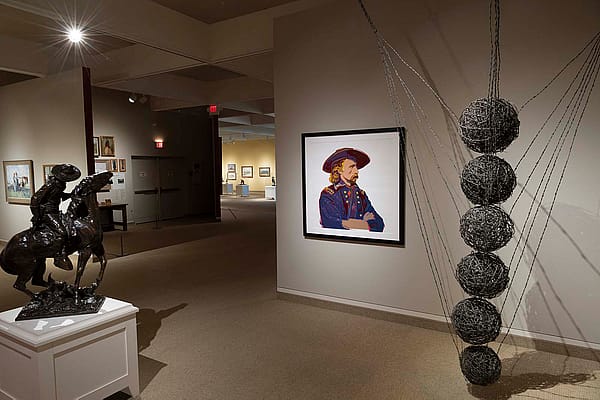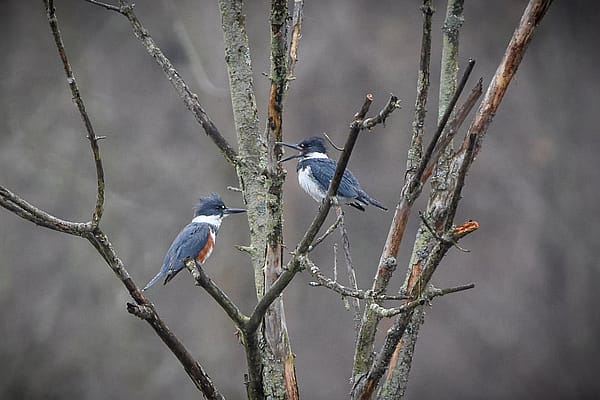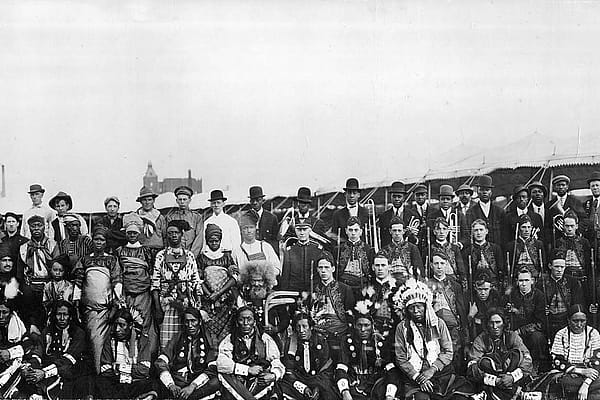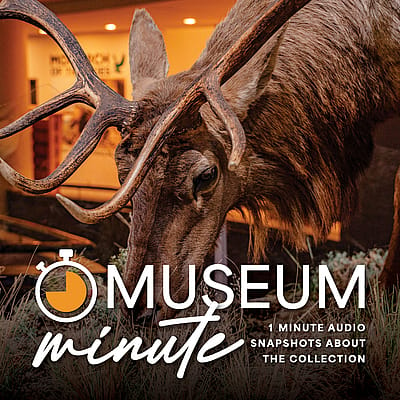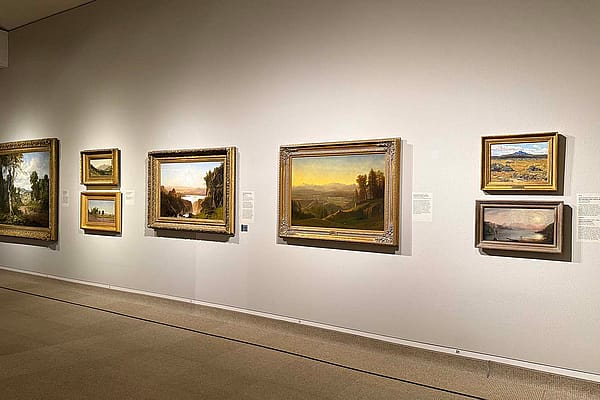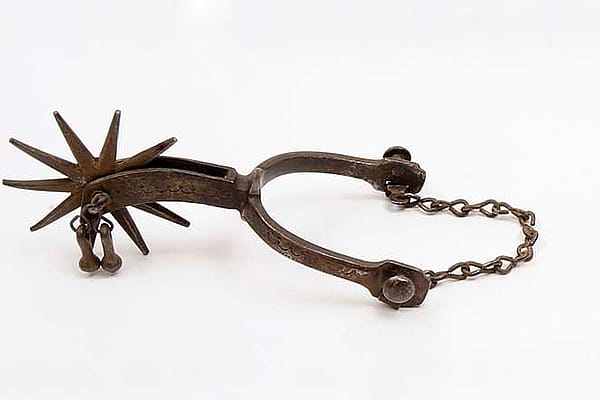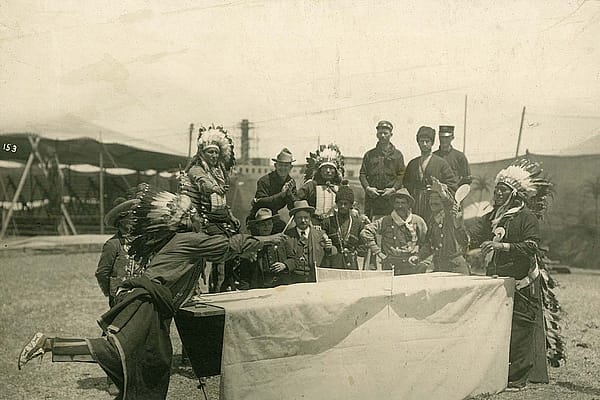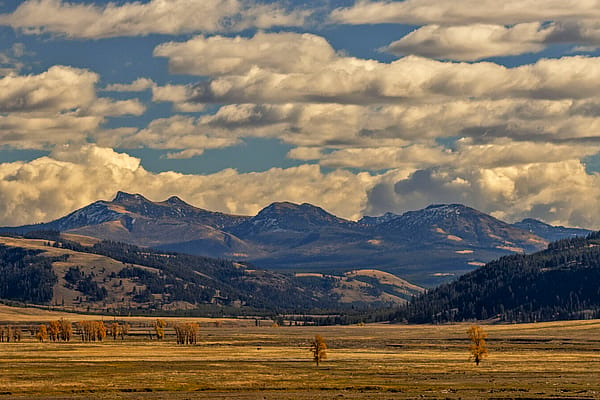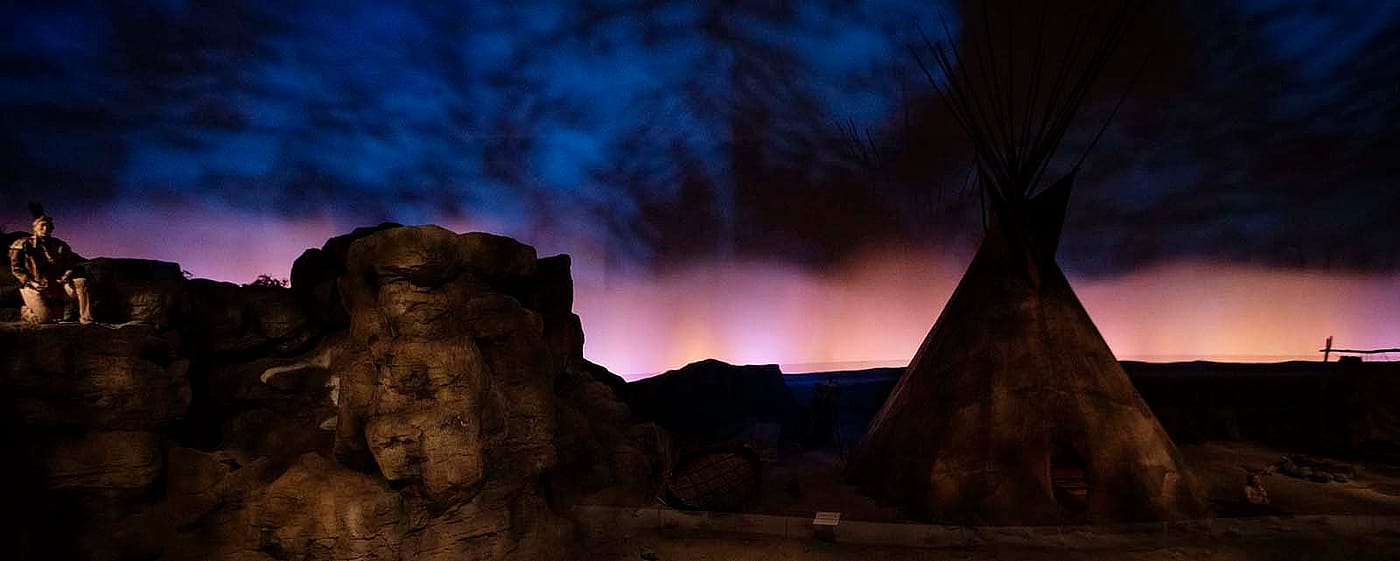
Buffalo and the People – Points West Online
Originally published in Points West magazine
Fall 2000
Buffalo and the People
By Emma I Hansen
Curator Emerita, Plains Indian Museum
The great herd running away,
The buffalo running,
Their drumming hooves
Send dust clouds billowing to the sky
And promise good hunting.
The buffalo and her child approaching,
Mother and Calf coming,
Turned back from the herd,
Promise abundance.
—Pawnee Song
From the beginning, the lives of Native people of the Plains and the buffalo have been culturally, economically, and spiritually intertwined. Before the horse became available to Plains tribes in the 17th and 18th centuries, bands hunted buffalo on foot using buffalo jumps, surrounds and other resourceful means to gain advantages over the herds. By the end of the 1700s, the Plains equestrian hunter/warrior tradition was established and embellished as additional tribal peoples entered the Plains. By 1880, the once vast herds of buffalo were destroyed along with the people’s lives as Plains buffalo hunters Once again, as tribes restore herds to reservation lands, Native people remember and celebrate the essential role of the buffalo in Plains cultural and spiritual life.
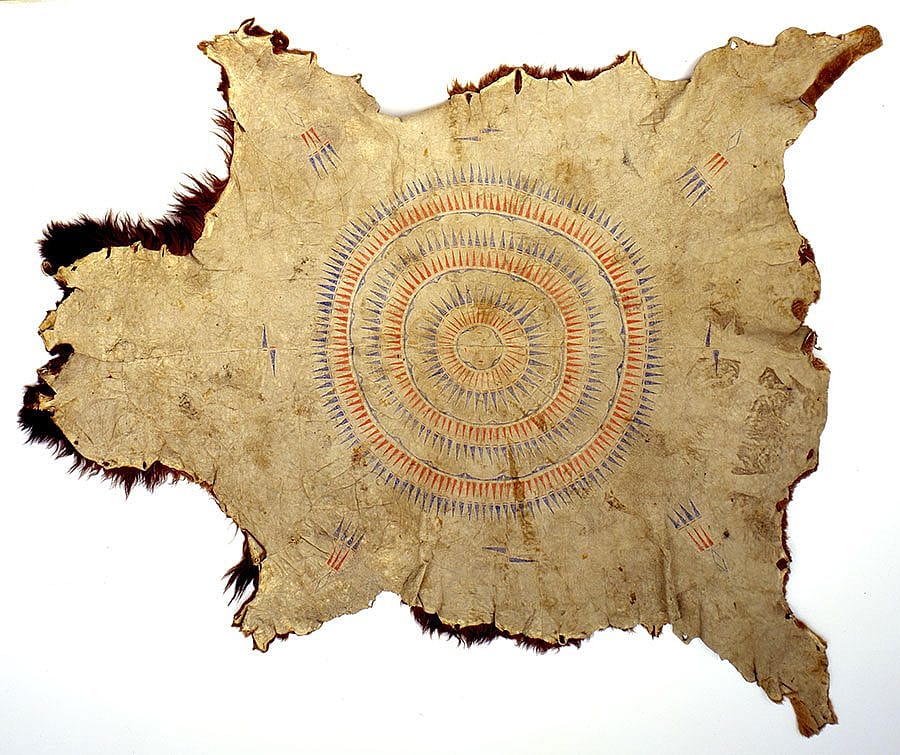
From the buffalo—its meat, hide, horns, bones, hooves, hair, and organs—the basic necessities of life were creatively produced. Women worked long hours with implements of sharpened bone and horn to clean, soften, and tan hides, that could be used as tipi covers, clothing, robes, and bedding. Pieces of rawhide were painted with pigments to be used as parfleches to transport the family belongings when traveling. Bones and horns were used for hoes, digging sticks, hide working tools, cups, and spoons. The paunch and bladder served as containers that could be suspended over cooking fires or filled with hot stones to boil meat. The meat itself was eaten fresh or preserved for later use by cutting it in strips that were dried in the sun. Dried meat was also pounded and mixed with buffalo fat and chokecherries to make pemmican, which could be stored and kept for several months.
Native people of the Plains respected and honored the buffalo, sustainer of life, through songs, dances, and ceremonies. Buffalo communicated with the people through dreams or visions and were called upon during hunger, war, illness and other times of need. Images of the buffalo were painted on shields and drums, carved in pipe bowls, or beaded on clothing. Men recorded buffalo hunts in stories, songs, ledger drawings, and paintings on robes and tipi covers. Members of warrior societies wearing bonnets made of buffalo hide and horns performed dances to capture the sacred power of the buffalo. Such power assisted men in attaining success as warriors and providing meat for their families as well as protection in battle. The words to a Lakota song refer to the protective power of the buffalo:
You cannot harm me,
You cannot harm one, who has dreamed a dream like mine,
One who has seen the buffalo in their mighty lodge
And heard them say,
“Arrows cannot harm you now.”
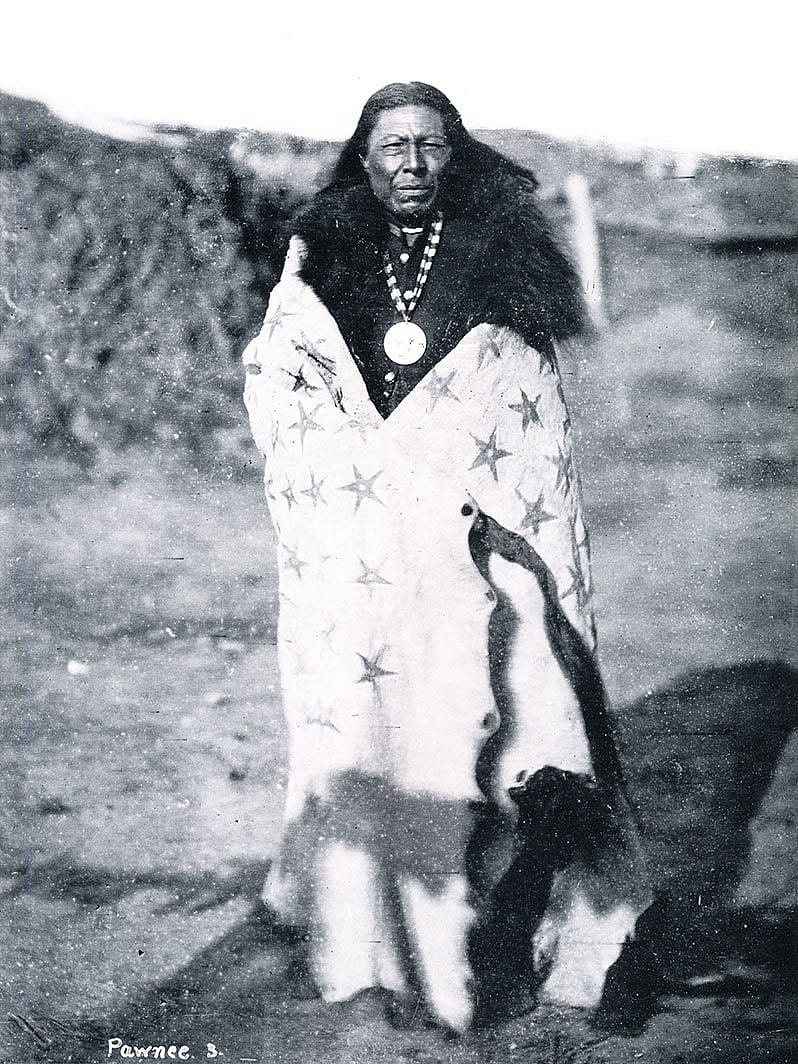
Among the Mandan people of the Upper Missouri River, the Okipa ceremony dramatized tribal origins and the creation of the earth, its plants, animals, and people and emphasized the importance of the buffalo. The four-day ceremony took place each summer after the corn was planted and before the tribal buffalo hunt. A part of the ceremony was the Buffalo Dance in which men wearing masks of tanned buffalo hide and horns, hide breechcloths, and wrist and ankle decorations of buffalo hair impersonated buffalo bulls. The Okipa ceremony ensured an abundance of buffalo and brought the herds closer to the villages in order that they could be hunted.
The primary spiritual relationship between the Lakota and the buffalo is embodied in the story of the White Buffalo Woman who brought the sacred buffalo calf pipe and the buffalo hunting way of life to the people. In the story, the White Buffalo Woman first appears as a wakan (holy) young woman, but also represents the buffalo, who gave his flesh in order that the people might live.
“The White Buffalo Woman disappeared over the horizon. Sometime she might come back. As soon as she had vanished, buffalo in great herds appeared, allowing themselves to be killed so that the people might survive. And from that day on, our relations, the buffalo, furnished the people with everything they needed – meat for their food, skin for their clothes and tipis, bones for their many tools.” 1
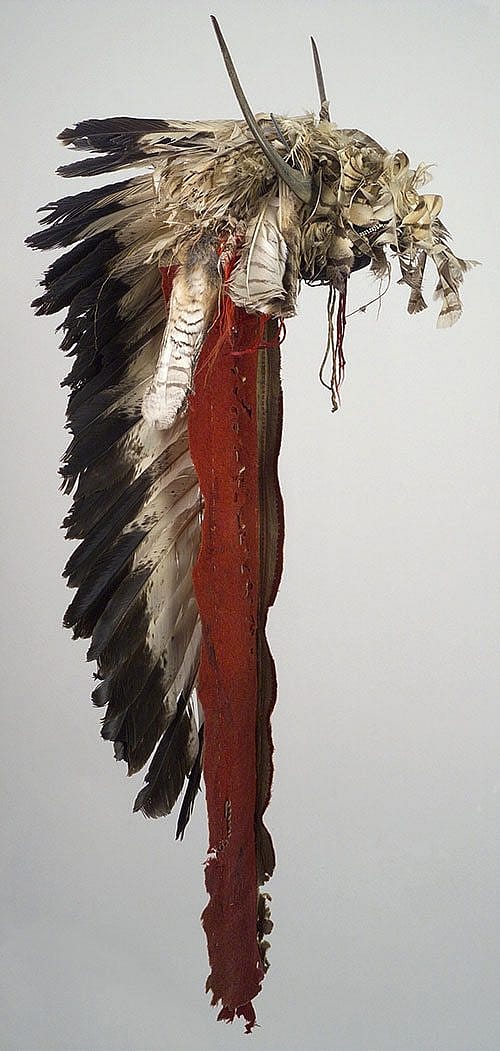
“A cold wind blew across the prairie when the last buffalo fell…a death wind for my people,” said Sitting Bull about the destruction of the buffalo in the last quarter of the 19th century. For Plains people it seemed that nothing was left of their old way of life. Although the symbolic spiritual significance of the buffalo endured, the herds themselves were absent from the day-to-day lives of the people.
In recent years, the relationship of the buffalo to Plains Indian people has entered a new chapter as tribal governments have established herds on reservation lands. The InterTribal Bison Cooperative (ITBC), founded in 1992, supports the building of the herds in keeping with their mission statement: “To restore bison to Indian lands in a manner which is compatible with our spiritual and cultural beliefs and practices.” The restoration of the buffalo to tribal lands symbolizes a spiritual and cultural rebirth for Plains people reminding them of their ties to the land and their heritage as free hunters the Plains. In the words of former ITBC president Fred DuBray, “We recognize the bison is a symbol of our strength and unity, and as we bring the herds back to health, we will also bring our people back to health.” 2
Buffalo and The People, one of the new exhibition galleries in the Plains Indian Museum, interprets the enduring relationship of Plains Indian people with the buffalo. The Museum collections exhibited in this gallery together with quotations and voices of Northern Plains tribal members bring new insights to this relationship. The Learning More computer program provides opportunities for visitors to further explore the cultural significance of the magnificent buffalo, its 19th century decline, and its restoration to the Plains.
Notes
1. Lame Deer, 1967 in Richard Erdoes and Alfonso Ortiz, eds. American Indian Myths and Legends, 1984. New York: Pantheon books, p. 52.
2. InterTribal Bison Cooperative Report, 1998.
Post 027
Written By
Nancy McClure
Nancy now does Grants & Foundations Relations for the Center of the West's Development Department, but was formerly the Content Producer for the Center's Public Relations Department, where her work included writing and updating website content, publicizing events, copy editing, working with images, and producing the e-newsletter Western Wire. Her current job is seeking and applying for funding from government grants and private foundations. In her spare time, Nancy enjoys photography, reading, flower gardening, and playing the flute.
